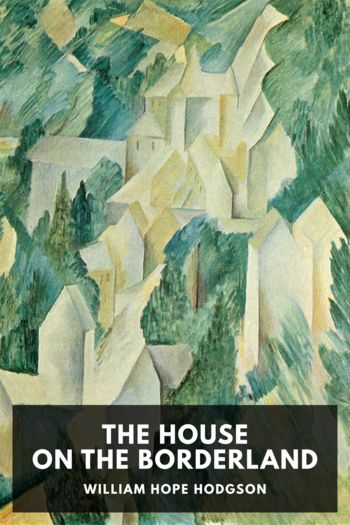Gluck by Diana Souhami (most interesting books to read .TXT) 📗

- Author: Diana Souhami
Book online «Gluck by Diana Souhami (most interesting books to read .TXT) 📗». Author Diana Souhami
By 1932 Gluck seemed to have the best of all worlds. She had the perfect studio and was working toward an autumn exhibition at The Fine Art Society. Her talent was respected and appreciated. She could enjoy the fruits of The Family’s efforts without having to conform to The Family’s demands and expectations. She had a place in smart society which made few moral judgements and was sexually tolerant. She had the acceptance and company of distinguished men of the Establishment. She could escape, whenever she wanted, to the simplicity of the countryside, the open fields and the clear sky. And yet at heart she seems to have been insecure, as if she had no point of balance, no safe hold on what was hers, no way of reconciling the contradictions in her life. She wanted to be independent, yet was tied to her family for her material needs. She extolled the virtues of the simple life, yet lived rather grandly. She thrived on excitement yet longed for peace. The smallest of everyday transactions raised questions of integrity, yet she showed no moral qualms about infidelity or affairs with other men’s wives. The strain told and she was to lose, at different points in her life, her lovers, her sense of home, her relationship to her work.
Gluck painted the people who were close to her, the view from the window, the landscapes that moved her, the flowers from her garden, the news that intrigued her. She chronicled her life in paint. The products of her time with Sybil Cookson were to line the walls of the Fine Art Society in 1932: ‘Sir James Crichton-Browne’, ‘Gamine’, ‘The Rouse Trial’, ‘Miss Margaret Watts’. Sybil moved out of Bolton House in a flurry shortly before the exhibition. She found Gluck ‘in the wood-shavings’ of the unfinished studio with Annette Mills, the designer of children’s shows, and later known nationally as the creator of ‘Muffin the Mule’.8 Sybil left Bolton with her daughters then and there and took a house in Cheval Place, Knightsbridge. The children, used to moving, were unperturbed.
FIVE
WHITE FLOWERS
Gluck never went for long without a woman in her life and when the new one arrived she moved quickly into her orbit. Her close relationships influenced her painting far more than theories of art. While she was with Sybil Cookson, she painted Sybil’s grandfather, daughter, former lover’s daughter and the courtroom dramas about which Sybil wrote. During the years with Constance Spry, from 1932–6, she painted arrangements of cut flowers.
The trade name Constance Spry epitomized refinement and respectability. Monied upper-class ladies turned to her for flower decorations for weddings, churches and coming-out dances. But though her name went with the skills of housecrafts and the polish of finishing schools her own life had not been easy. She endured an unprivileged and not particularly happy childhood, left her first husband who was moody and depressive, had no marked enthusiasm for motherhood and in about 1919, in her thirties, took up with a married man, Shav Spry, whom she married after both he and she had obtained their respective divorces. She met Gluck in 1932 when this marriage too had run into problems. It was Prudence Maufe who effected the introduction:
4 January 1932
Dear Gluck
Three things.
1. The camellias are marvellous.
2. I am sending you herewith a feather of white velour, which I think is lovely.
3. Edward and I are giving ourselves the pleasure of sending you up a ‘Mixed Bunch’ of white flowers for your Studio. I have commissioned my friend Mrs Spry to do it and to ring you up when certain flowers which I have asked for are procurable. She will probably lend you a white marble vase to put them in – she often brings her own when she does not know people’s own vases. I think she has a genius for flowers and you have a genius for paint, so that ought to make for happiness. Anyhow, we send them to you with our love and very deep appreciation of your sympathy in work.
Bless you
Prudence Maufe
Constance Spry had not met Gluck when the phone call came through from Prudence Maufe to her shop, ‘Flower Decorations Ltd’ in South Audley Street. Like her husband Edward, Prudence had trained as an architect. She specialized in interior design and at the time ran a show flat in the Mansard Gallery of Ambrose Heal’s furniture shop in the Tottenham Court Road. She exhibited Gluck’s pictures in the flat and described the flower arrangements supplied for it by Constance as ‘a weekly masterpiece … a genius every Monday.…’1
The ‘Mixed Bunch’ was intended as a fitting present for Gluck’s elegant new studio. Constance was a contributor to the prevailing fashion for white interiors – white walls, upholstery, ornaments and flowers. 1932 was the





Comments (0)